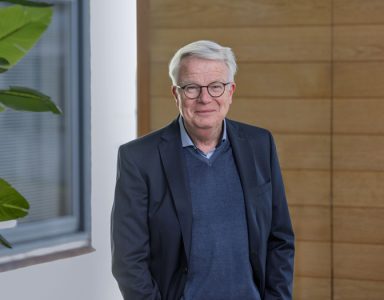Bright Chips project
The rapid development of computer technologies brings with it numerous benefits, as well as challenges. Three prominent Principal Investigators (PIs) from Eindhoven University of Technology, Technical University of Munich, and the University of Twente have formed a consortium to address the challenges posed by the technological advancements in computer chips. This has led to the creation of the Bright Chips project. The consortium’s focus within this project is to revolutionise information and quantum technologies by combining photonic and electronic functionalities into a single chip.
Challenges in Computer Chip Development
Developing a combined chip has long been a challenge and seems unattainable, as chips made with conventional silicon technologies cannot emit light. If computer chips could utilise light, they would be significantly faster and more energy efficient. Furthermore, optical functionality would be transformative for quantum computing, as silicon technologies are by far the most scalable, enabling the connection of millions of quantum bits using light. Finding a solution to this challenge could therefore lead to a significant breakthrough in the market.
The Bright Chips Project
The consortium of the three universities is tackling this challenge through the Bright Chips project. The goal is to develop light-emitting computer chips by altering the most fundamental property of a specific material: how the atoms are arranged in space. In this process, they explore a new material, hexagonal SiGe, with an atomic structure that differs from the natural cubic material, thus making it optically active. The project aims to understand the mechanisms of light emission in both classical and quantum regimes when many, few, or even single photons are generated on demand.
Moreover, the Bright Chips project will clarify the optical and electrical properties of quantum structures, to conduct groundbreaking experiments that could open new areas of research.
In the ultimate experiments, the Bright Chips project will connect the advantageous optoelectronic properties of this new material system and investigate:
- Active photonic circuits in which light is switched by light;
- The transduction of a static electronic quantum state (spin) into a propagating photonic state, thereby connecting distant qubits.
Support from Hezelburcht
Hezelburcht’s specialists are proud to have collaborated with the three PIs from different universities on this challenging project. Thanks to the ERC Synergy Grant, the consortium can focus on the challenge of developing combined computer chips, thus enabling pioneering research. By being involved in various critical steps of this proposal, our specialists have been able to provide optimal support for this successful collaborative project!
The three PIs are very positive for all the input provided by the consultants. They meticulously guided us through the entire process - Erik Bakkers | Professor TU Eindhoven

